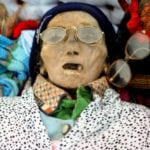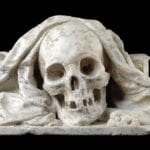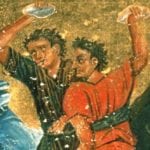 Mysteries
Mysteries  Mysteries
Mysteries  History
History 10 Surprising Stories About the Texas Rangers
 Humans
Humans 10 Philosophers Who Were Driven Mad by Their Own Theories
 Miscellaneous
Miscellaneous 10 Video-Game-Worthy Weapons and Armors from History
 Weird Stuff
Weird Stuff 10 Psychics Who Accurately Predicted Wartime Events
 The Arts
The Arts 10 Pieces of Art Inspired by a Broken Heart
 Health
Health 10 Science Fiction-Sounding New Medical Treatments
 History
History 10 Surprising Facts About the Father of Submarine Warfare
 Space
Space Ten Astonishing New Insights into Alien Worlds
 Weird Stuff
Weird Stuff 10 Bizarre Summer Solstice Rituals Still Practiced Today
 Mysteries
Mysteries Top 10 Haunting Facts About the Ghost Ship MV Alta
 History
History 10 Surprising Stories About the Texas Rangers
 Humans
Humans 10 Philosophers Who Were Driven Mad by Their Own Theories
Who's Behind Listverse?

Jamie Frater
Head Editor
Jamie founded Listverse due to an insatiable desire to share fascinating, obscure, and bizarre facts. He has been a guest speaker on numerous national radio and television stations and is a five time published author.
More About Us Miscellaneous
Miscellaneous 10 Video-Game-Worthy Weapons and Armors from History
 Weird Stuff
Weird Stuff 10 Psychics Who Accurately Predicted Wartime Events
 The Arts
The Arts 10 Pieces of Art Inspired by a Broken Heart
 Health
Health 10 Science Fiction-Sounding New Medical Treatments
 History
History 10 Surprising Facts About the Father of Submarine Warfare
 Space
Space Ten Astonishing New Insights into Alien Worlds
 Weird Stuff
Weird Stuff 10 Bizarre Summer Solstice Rituals Still Practiced Today
10 Surprising Near-Death Experiences That May Change Your Beliefs
We’ve discussed near-death experiences (NDEs) before, concentrating mainly on testimonies from people in modern Western societies. Now we’re going to look at NDEs from earlier times and different cultures. Will these surprising testimonies prove or disprove the reality of NDEs?
We can’t guarantee any answers. After all, you have to die to confirm the truth. But we do believe that these stories will raise intriguing questions for even the most skeptical readers.
10 Black Elk
When he was a young boy, Lakota Sioux medicine man Black Elk (1863–1950) told author John Neihardt about his near-death experience at age nine. He had collapsed due to swelling of the arms, legs, and face. That’s when he saw two men emerge from the clouds, who told him: “Hurry up, your grandfather is calling you.”
Though he was sorry to leave his parents, he rose above the Earth to a rainbow door. There, he saw six elderly grandfathers, whom he described as “older than men can ever be—old like hills, old like stars.” These elders made prophecies and gave him powers of healing and wisdom. After coming back to Earth two weeks later, he was initially reluctant to talk about his experiences. Then he was taken to a medicine man and relived them in a ritual.
As a young man, he joined Buffalo Bill’s traveling show, ultimately performing for Queen Victoria in London. As he continued to tour Europe, he got separated from his troupe in Paris and fell ill.
Near death for 24 hours, he reported a spirit journey across the Atlantic Ocean to his homeland in Dakota before being returned to Europe. Apparently, the French medical establishment was preparing to put him in a coffin when his heart started beating again and he sat up. Eventually, he returned to the reservation, where he became a shaman and prophet.
Black Elk’s experience appeared to have been affected by his cultural upbringing, with visions of heavenly horses, migrating geese, and spotted eagles. Some have questioned why Black Elk would have told a white man about his experience.
According to researcher Steve Straight, this may have been because Neihardt had experienced a similar NDE himself. Allegedly, Black Elk said that he felt someone should tell the world about the experience.
9 Myth Of Er
In The Republic, Plato referenced a speech by Socrates which told the tale of Er, a Pamphylian warrior who was left for dead on a battlefield but later recovered. Although assumed to be dead, Er’s body did not decay and returned to life upon the funeral pyre. Usually seen as an allegorical story by Socrates, some have suggested that it was evidence of an ancient NDE.
Er reported traveling with a large group to a mysterious, dazzling field or plain. Souls traveled upward or downward via twin openings in the Earth, depending on the judgment they received. Er claimed that he saw the tyrant Ardiaeus being bound, flayed, and dragged through thorns before being deposited in Tartarus.
After seven days, Er claimed that he was moved to a new place with a radiant rainbow pillar where the dead drew lots to determine their future lives and drank from a river to erase their memories before moving on. Er himself was stopped from drinking from the river and sent back to the living world.
Many classicists doubt that the story of Er counts as a true NDE. They believe it is more likely to be a fictional story invented by Socrates. However, some NDE researchers take it more seriously because the account includes eight of the 16 most common aspects reported in modern NDEs.
These include movement toward a bright light (the dazzling plain), an otherworldly landscape, a hellish experience, encounters with the deceased, life review (in the form of judgment), experience of a boundary between worlds, and a forced return. This may make Er’s tale the oldest record of an NDE in history.
8 Islamic Experiences
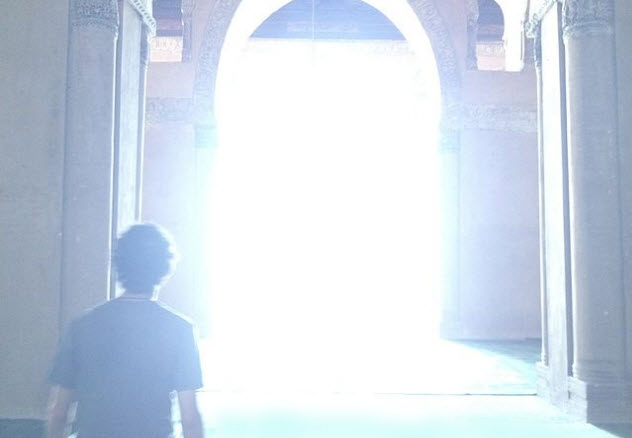
Islam teaches that after the death of the physical body, there is a kind of “soul sleep” known as Barzakh that will persist until the resurrection and judgment. What exactly happens in Barzakh is unknown because the scriptures say that the dead cannot know or perceive the events of the living world and the living cannot know the status of the dead. Yet, many Muslims believe that certain people are given hints of their eventual fate during Barzakh, a preview of eternal damnation or bliss.
After psychologist Joel Ibrahim Kreps noted a lack of information about Muslim NDEs in Western literature, he conducted a survey. He had been inspired by the testimony of a woman he met in Egypt, who said she had been lifted up to Heaven after a car accident and had seen the throne of God. The throne was inscribed with these words: Laillahah illalah, Muhamadan Rasussululah (“There is no God but God, and Muhammad is His messenger”).
Another NDE involved a Muslim woman named Suleman, who experienced a “multidimensional place of layered existences” while suffering acute necrotizing pancreatitis. She reported entering the sixth dimension—near to the “Absolute Reality of Divine Light”—where she found illuminated beings including Mahatma Gandhi and Martin Luther King Jr.
Then she noticed an even more illuminated group of beings: Noah sitting alone, Moses with Jesus, Lord Krishna with the Buddha, and Muhammad next to the Virgin Mary with the luminous face of his son-in-law and successor, Ali, projecting out of his body. However, this account is unusual because Suleman was an Ismaili Muslim whose beliefs may have affected her NDE and involved elements that are rare or absent from mainstream Muslim NDEs.
When compared to other cultural groups, there seem to be fewer Muslim NDEs reported overall. A survey of those caught in an earthquake in Pakistani Kashmir found no cases of NDEs, compared to almost 40 percent following a similar event in China.
One theory suggests that Muslims who experience NDEs may be reluctant to talk about them because NDEs contradict the orthodox teachings of Islam. These people may be afraid of being branded as heretics.
7 Hindu
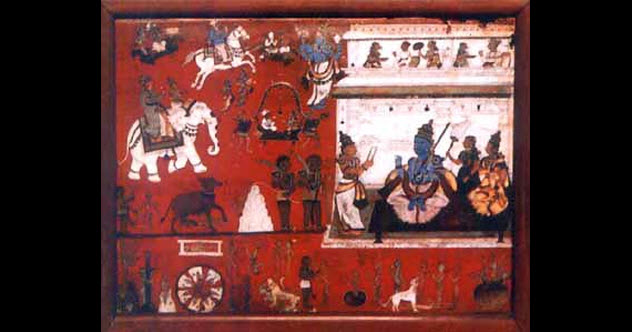
There are both similarities and differences between Hindu and Western near-death experiences. The first major report on the phenomena was by researchers Karlis Osis and Erlendur Haraldsson in 1977. They found that about 80 percent of cases involved encounters with otherworldly beings, but they usually had a more bureaucratic nature than Western reports.
Commonly reported figures include Yamraj (the god of the dead), the yamdoots (his messengers), and Chitragupta, who consults a book to determine the balance of a person’s positive and negative karma. Hindu NDEs seem to have a recurring theme in which an individual is brought for post-death processing by a clerk and it becomes apparent that some grievous mistake has been made.
Vasudev Pandey reported being dragged by two individuals to a frightening black, naked figure. The figure flew into a rage, telling the attendants, “I told you to bring Vasudev the gardener. Our garden is drying up. You have brought Vasudev the student.”
He was taken back and woke up in his bed surrounded by his friends and family, including the gardener Vasudev, who died the next day. Pandey identified the black figure as Yamraj, Hindu god of the dead. Another man reported being brought to a waiting room and having his legs cut off at the knees when he tried to escape. When it was discovered that his name was not on the list of the dead, he was told to reattach his limbs and go back.
According to researchers Dr. Satwant Pasricha and Dr. Ian Stevenson, there were no cases of a tunnellike experience and only one of an out-of-body experience. However, the tunnel experience has been noted by other researchers.
Instead of the “life review” that is commonly reported in Western NDEs, Hindu experiences are more likely to involve someone reading out a record of one’s life, called an akashic record.
6 Drythelm’s Vision
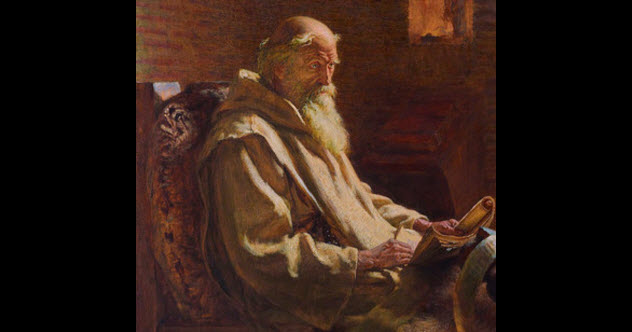
The eighth-century English monk Bede included an NDE in his Historia Ecclesiastica Gentis Anglorum (aka The Ecclesiastical History of the English People). A Northumbrian man named Drythelm grew ill and seemed to die. His spirit was led to another world by a guide with a shining face and bright clothing. In this place, certain sins were treated with the punishment of fire and ice, but Drythelm was rescued from malevolent demons by his guide.
He was treated to a vision of the mouth of Hell, where the spirits of the dead were enclosed in fire globes that rose and fell. He was also shown the region of between Heaven and Hell, where souls that were not worthy of expedited entrance into Heaven sang while waiting for a decision in their favor.
Drythelm did not die. But on the basis of his vision, he was said to have divided his property among his family, joined a monastery, and spent the rest of his life expounding on the importance of prayers, alms, fasts, and Masses on behalf of the dead. For Bede, the importance of this account was its potential to encourage the conversion of sinners. It reflected the emerging Catholic eschatology that there was a Purgatory that was distinct from Hell.
The sixth-century Pope Saint Gregory the Great also devoted a book to visions of the afterlife and other supposed proofs of the immortality of the soul. One involved a hermit who was dragged into Hell and witnessed the torture of the spirits of powerful people.
But he was rescued at the last moment by an angel who told him, “Leave, and consider carefully how you will live from now on.” Another tale told of a soldier who saw the spirit of a businessman hanging halfway off an otherworldly bridge, with hideous demons trying to drag him into a river by the hips and angels trying to pull him up by his arms. These stories of Gregory and Bede helped to develop a religious narrative tradition that has lasted for centuries.
5 Chinese And Japanese Folklore
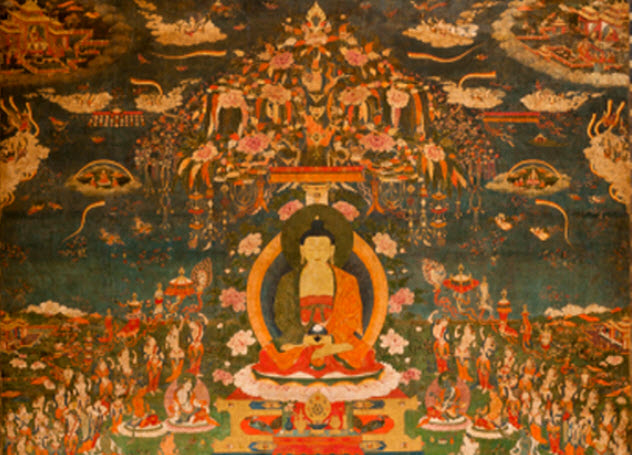
Medieval China and Japan both recorded examples of NDEs, dreams, visions, and hallucinations. One early Taoist tale involved Kien Tsze (Jianzi) of the Chao principality in 498 BC. He was ailing from a sickness for almost three days before recovering with a bizarre tale.
He told his courtiers: “I went to the residence of the emperor [of Heaven], where I much enjoyed myself. With the host of shen, I wandered about in the all-ruling Heaven.”
Then he was attacked by two bears. He shot them, which pleased the emperor of Heaven, who gave blessings upon the prince. Kien Tsze’s physician compared this encounter with an earlier experience by Duke Mu of the Qin dynasty.
Chinese NDEs were later influenced by the introduction of Pure Land Buddhism, which encouraged visions of Heavens and Hells. A man named Chao T’ai died and then revived after 10 days. He reported having been brought to a city in the East by horsemen. There, he was presented to a magistrate, ordered to confess his sins, and appointed as the inspector of Hell’s waterworks.
He observed the various punishments for the dead and learned how to avoid such an afterlife. Finally, it was discovered that his presence was due to a bureaucratic oversight, and he was sent back to the land of the living.
Meanwhile, the first written Japanese accounts of NDEs were compiled by ninth-century monk Kyokai. The first was a heavenly experience reported by Lord Otomo no Yasunoko no Muraji, who took a road of colored clouds to a golden mountain where he met a recently deceased prince regent and a wise monk.
A less pleasant account came from Kashiwade no omi Hirokuni, who traveled on a golden road to a golden palace where his deceased wife and father were being tortured. However, he was allowed to return to life due to good behavior.
Another important individual in terms of medieval Japanese NDEs is the 12th-century figure Honen, who formed the Jodo (Pure Land) School of Buddhism in Japan. He wrote detailed descriptions of his visions of Heaven, with jeweled trees and ground and the music of birdsong, harps, and flutes.
The Pure Land Buddhists attempted to simulate NDEs. They put a statue of their principle Buddha, Amida, at the end of a dying person’s bed and placed cords attached to the statue into the dying person’s hands.
4 Delok
Some NDE researchers have noted striking parallels between reports of NDEs and accounts of experiences given in The Tibetan Book of the Dead. According to the book, at the point of death, an individual will pass through bardo states, which offer a chance at enlightenment.
These bardo states seem to resemble elements from NDE reports. For example, the bardo of dying includes a phenomenon called ground luminosity (aka clear light). In the luminous bardo of dharmata, various religious deities are said to appear. Some of these are believed to take the form of non-Buddhist figures, so a dying Christian would see visions of Christ or the Virgin Mary.
Those who pass into the bardo states but then return to life are referred to as delok (“returned from death”). Although they appear to die due to illness, they instead spend time touring the realm of the dead to witness judgment and suffering in the Hell realms. Occasionally, they take a side trip to paradise. Then they are sent back by the lord of death with a stern warning about living spiritually beneficial lives.
One famous 16th-century delok was Lingza Chokyi, who reported an out-of-body experience in which she saw a dead pig lying in her bed wearing her clothes. She watched her family perform the ritual practices of her death but became annoyed when they didn’t give her a plate of food.
When her children cried, she reported feeling an extremely painful “hail of pus and blood.” Eventually, she merged minds with a guiding master and entered the bardo realm.
There, she encountered a bridge to the Hell realms, watched the lord of death tallying the good and evil deeds of the dead, and met a yogi who was entering the Hell realms to liberate the suffering. Eventually, a clerical error was discovered, and she was sent back to the land of the living.
3 Aerial Tollhouses
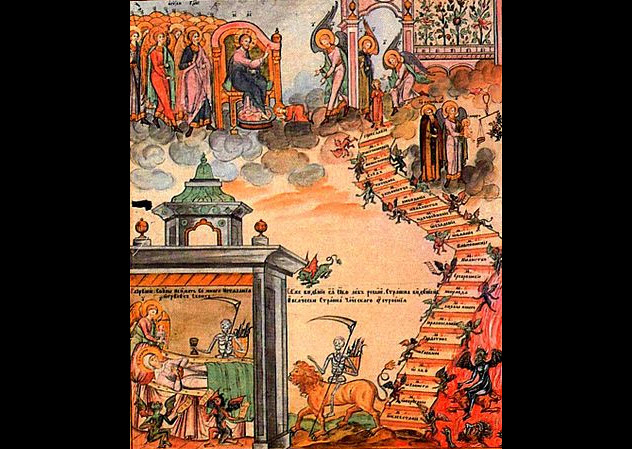
Within Eastern Orthodoxy, there is a controversial tradition that souls are transported by angels toward Heaven after death. But before they get there, they must travel through an aerial realm occupied by demons who concoct or expose reasons why the soul should be sent to Hell.
Opponents believe that this is a heretical remnant of Gnosticism. Supporters claim that it was a belief held by Saint Ignatius (aka Dmitry Brianchaninov).
One piece of evidence of the existence of the aerial tollhouses is the vision of Gregory of Thrace, a disciple of the 10th-century monk Basil the New. Gregory had a vision of the torments suffered by a woman named Blessed Theodora, who had died on her couch and awoken to find herself surrounded by “Ethiopians.”
She said “their eyes were like glowing coals, their entire appearance was as frightening and evil as the fiery Hell itself. They began to grow indignant and to make noise like dogs; others howled like wolves. As they looked at me, they were full of anger; they threatened me, kept rushing at me and gnashing their teeth, and appeared ready to devour me.”
Theodora would pass through 20 tollhouses, each associated with a different kind of sin. The first involved sins of the tongue, such as empty talk. The next two tollhouses related to lies and slander.
From there, the sins slowly increase in seriousness—gluttony, laziness, theft, usury, injustice, envy, pride, anger, and hatred. These are followed by the houses associated with murder, magic, lust, adultery, sodomy, and heresy.
Finally, there is a house devoted to cruelty and lack of mercy. With the help of angels, Theodora eventually passed through the torments of the tollhouses and reached the gates of Heaven.
Father Seraphim Rose, a controversial Orthodox theologian, argued that NDEs are interpretations of the passage through these aerial tollhouses. He concluded that NDEs occur in an invisible part of the real world inhabited by fallen spirits and not in a heavenly realm.
According to Rose, NDEs that reported pleasant experiences were the result of deception by these spirits. He believed that reports of luminosity were not to be trusted because the Orthodox tradition teaches that beings of light may not necessarily be Christ or angels but rather evil spirits in disguise.
2 Thai Experiences
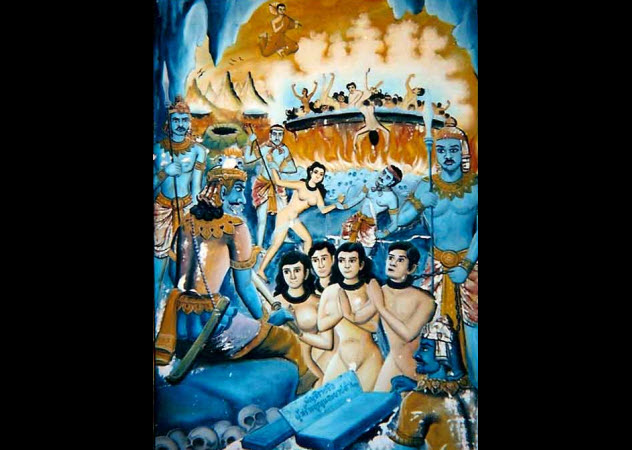
Thai NDEs appear to be influenced by the Theravada Buddhist tradition and the Book of Phra Malaya, which was written by a medieval monk. There is also the element of clerical error seen in the NDEs of other Eastern cultures.
Phra Malaya was meditating when he had a vision of descending into Hell and entering the hall of Yama, the lord of the dead. Various options existed for dead humans to reincarnate.
They could be assigned human lives at various social stations and levels of attractiveness. They could become various kinds of animals. They could also be consigned to one of the 14 Hells or nine Heavens, which Phra Malaya then toured.
One woman named Pong reported being bitten by a cobra and dying. She was brought to a judge who told her that she wasn’t supposed to die. Before she returned to her body, she saw that Heaven was a pleasant place with birds, flowers, and nice houses. Hell was a cornucopia of torments, particularly whipping.
Major General Sanor Jintaraht reported two NDEs. While in a coma caused by a stroke, he found himself walking in a crowd of figures dressed in white mourning clothes. Then he entered a Hell realm filled with skeletons. He was told that he would never see his family again.
Suddenly, a woman appeared and gave him his favorite foods. But when he said he was thirsty, she told him that he couldn’t have any water because he hadn’t donated water to anyone in life. He resolved that if he returned to life, he would be charitable to monks. After a long walk with the woman, he regained consciousness.
His second NDE occurred while he was receiving treatment for kidney stones. He heard a voice telling him that he was dying. A yamatoot messenger spirit appeared and told him to lie on a glass plate for transport to Heaven, which was filled with fragrant yellow flowers.
After a while, he was taken to a house on the seventh level. But the servants wouldn’t give him a key because he had too many sins. Eventually, they turned into black giants.
He fled back to the glass plate and explored Heaven further before a voice called him back to his body. He had difficulty reentering his body, which kept rejecting his soul. But finally, he leaped in through his head and regained consciousness.
1 Jewish Tradition
NDE researchers have analyzed experiences in Israel and discovered parallels with the afterlife stories told in the Talmud, Zohar, and other Jewish texts. The theme of judgment appears to loom large in the Jewish NDE experience. Many modern Jews profess a disbelief or disinterest in afterlife prospects, but traditional concepts held more weight for previous generations.
According to researcher Jonathan Neumann, the Talmud contains two separate accounts of NDEs. The first is of a man named R. Joseph who died and came back to life. He told of a world where all social statuses were reversed, but sages and martyrs were still revered.
The second story is of R. Huna, who became so ill that funeral shrouds were prepared. He revived and claimed that God reversed the decree of his death. These tales feature the same reports of spiritual beings and mystical lands reported in modern NDEs.
In the Zohar text of the kabbalistic tradition, there is the story of R. Jose. He died and was revived, claiming that his son’s mourning cries had persuaded the heavenly host to beseech God to grant him 22 more years of life.
One modern account involved an Orthodox Jewish woman identified only as E.L. Her brother had dreamed that a tragedy would befall her. After some soul-searching, E.L. realized that she was being called to death due to her failure to maintain the supreme feminine virtue of modesty.
A week later, she felt ill and believed that her death was at hand. She stayed at home and performed the Sabbath rituals with her husband. The angel of death couldn’t touch her due to the holiness of the room.
When she went to her bedroom, however, she collapsed and lost consciousness. She reported that she felt the angel of death tearing out her soul. She was beaten by angry angels and then brought before her righteous deceased relatives.
She felt a divine presence crying. After witnessing the soul of an immodest person condemned to Hell, she begged to be sent back to look after her children. Fortunately, a Hasidic rabbi who knew her appeared in spirit form and argued on her behalf, allowing her to return to the land of the living.
David Tormsen expects his near-death experience to be a single pair of hands clapping slowly in the darkness. Email him at [email protected].

